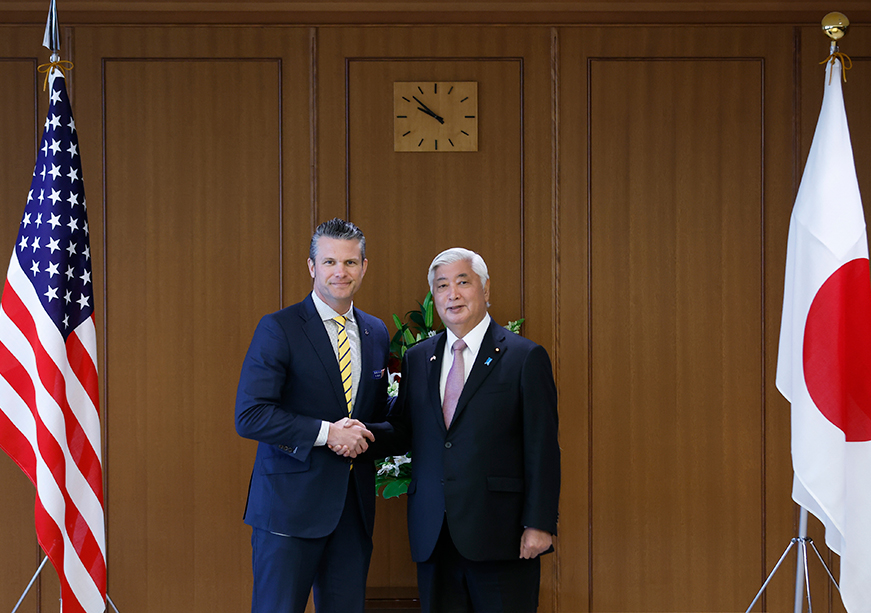
Infrastructure development, crucial for India’s economic growth in the coming decades, will require estimated investments of US$4.5 trillion by 2030. The Infrastructure Investment Trusts (InvITs), which possess and manage infrastructure assets, such as roads, highways, power plants, pipelines, warehouses, etc. and provide regular income with consistent cash flow through long-term concessions, can boost foreign investments for India’s much-needed infrastructure development. However, despite the 2014 Securities Exchange Board of India (SEBI) regulations and growing investor interest, India's progress with InvITs is relatively nascent.
Structure of InvITs
InvITs are similar to Master-Business Trust instruments[i] in several developed nations such as the United Kingdom (UK), United States (US), Singapore, Australia and Hong Kong. Around 400 listings of these instruments globally amount to over US$ 1 trillion in total investment. Instruments such as Yieldcos and Master Limited Partnerships in the US have facilitated institutional investments into infrastructure assets. India’s 22 registered InvITs can be listed on various trading platforms like stock exchanges.
An InvIT has four primary roles: 1) Trustee, 2) Sponsor, 3) Investment Manager, and 4) Project Manager. A trustee must be registered with SEBI and invest at least 80 percent in revenue-generating infrastructure assets. Sponsors are body corporates or companies holding a net worth of at least INR 100 crore, with a 15-percent stake in InvITs with a lock-in period of three years or as specified. Investment managers oversee operational activities, while project managers typically handle project execution.
Traditional infrastructure financing Vs. InvIT cash flow prospects
Though robust and diverse, “traditional” infrastructure funding channels—including government funding in public-private partnership (PPP) contracts—are reliant on equity markets, debt securities, and lending processes by banks and Non-Bank Financial Companies (NBFCs) and lack the adaptability of InvITs. They are subject to diverse risks, such as project mispricing, aversion on account of credit ratings, and a lack of long-term capital-raising strategies. Besides, a project often stagnates due to liquidity crunch, limited incentives, and depth in the corporate debt market.
InvITs, on the other hand, are designed to provide a long-term equity and debt investment option in Special Purchase Vehicles (SPVs). Cash generated by the InvIT-held projects is channelised distributed to unitholders through dividends, interest, and repayment of loans advanced to the projects. Thus, InvIT investors engage in long-term asset investment while maintaining a long-term capital essence. This blend bridges the gap between the expectations of private equity and strategic investors. It enables short-term funding from private equity and other capital sources before the takeover by long-term investors, ensuring asset development with long-term capital.
Risk assessment: Incentivising investors
Assets under InvITs often have long-term concession agreements[ii] or underlying agreements that provide stable, long-term cash flows. Investors, on becoming unitholders, can vote on matters of acquiring new assets or borrowing, appointments or change of investment manager and sponsors, and exit if a conflict arises. They receive periodic disclosures like annual reports, valuation reports, quarterly/semi-annual financials, etc. These features make investing in InvIT units more secure than direct investment in real estate or infrastructure.
From a distribution standpoint, investors primarily seeking recurring revenue can invest in InvIT due to the consistent cash-flow structure. Derived from the function of the underlying asset that is not inflation-affected, this revenue also hedges against inflation.
However, despite these advantages, InvITs are not risk-proof. For instance, the risk of overvaluation of the Initial Public Offering (IPO) and the higher probability of project deviation relative to the real cash flow because of the long-duration projects. Additionally, InvIT players leave little to no room for retail investors. A stock market participant is fairly unequipped to evaluate the “predictable” cash flow yield an InvIT offers.
InvITs have streamlined the balance sheets of infrastructure firms, releasing equity and reducing debt borrowed from banks, improving the banking sector's health and creating room for infrastructure companies to borrow for new projects. However, despite promising returns, InvITs haven't gained significant traction in secondary markets, especially among retail investors, primarily because of the uncertainty about risk assessment. The first two listed InvITs are currently trading below their respective issue price. To entice retail investors, issuers are adding more assets to the InvIT pool.
Issuer challenges
InvITs offer a cost-effective way for developers to secure equity funding for existing projects burdened by high-cost loans, creating space for additional bank borrowings at competitive rates. This financial setup releases developers' tied-up capital for reinvestment in other projects.
InvITs offer a cost-effective way for developers to secure equity funding for existing projects burdened by high-cost loans, creating space for additional bank borrowings at competitive rates.
But the long-term game presents challenges for both developers and issuers. An InvIT must develop the capacity to yield competitively in a volatile interest rate landscape. Issuers might struggle to attain appealing asset valuations. InvITs also face competition from other funds/instruments like Alternative Investment Funds (AIFs),[iii] offering more operational flexibility and unrestricted investment in incomplete infrastructure assets.
InvITs dive into specific industries with distinct business cycles and unique traits. For instance, transmission assets secure with a 25-year lifespan rank as the safest infrastructure assets. Renewable energy assets span 20-25 years, with wind assets showing more variability than solar. Though foreign investment can reach 100 percent in many ‘infrastructure’ areas, specific sub-sectors (like telecom towers) require prior approval from sector-specific regulators for foreign investments to surpass set limits.
The way forward
While InvITs are yet to enthuse retail investors, initial InvITs such as the IRB InvIT and IndiGrid trust have stirred significant interest from foreign entities. In 2019, Brookfield Asset Management's InvIT from Canada acquired the 1,480 km long East-West Gas Pipeline. Formerly owned by Reliance Industries Limited, its acquisition included a 100 percent equity stake in Pipeline Infrastructure Limited (PIL), the owner and operator.
The regulatory framework must be conducive to attracting investors and tapping into existing Indian sources of long-term capital like pension funds and insurance instruments. It must also aid in raising foreign debt capital by allowing bonds and external commercial borrowings (ECBs) in projects or renewables. The Union Budget 2021-22 allowed foreign portfolio investors (FPIs) to debt-finance InvITs. Such access to extended-duration foreign debt capital, beyond the current limitations on commercial ECBs, can make InvITs a desirable prospect for an investor. Deepening the long-term bond markets and permitting long-term foreign debt capital can reduce the mismatch between long-term and short-term aspects and make the returns more stable. Further, investors must align sector-specifc approvals with the best-suiting transaction structure during an InvIT rollover.
Monetisation and cash-flow prospects
InvITs have mobilised around INR 22,675 crore worth of funds from April 2022 to October 2023. The success of InvITs is contingent on the increasing number of investors and scaling up monetisation tools. The government must augment the development of appropriate structures to facilitate monetisation.
InvITs are gaining traction given the National Monetisation Plan, which aspires to monetise INR 6 Trillion worth of core assets of the central government from FY 2022 to FY 2025. For instance, Power Grid initiated an initial public offering (IPO) involving transmission assets, followed by the National Highways Authority of India (NHAI) sponsoring an InvIT with a small asset pool. The success of these initiatives in achieving transparent price discovery has prompted further rounds of investment; however, awareness regarding predictable cash flow yields (similar to debt) and potential growth-related appreciation (similar to equity) could direct capital into this hybrid model.
The success of infrastructure schemes like Bharatmala and Sagarmala in the infrastructure sector hinges on the government's shift from PPP to PFI (Privately Funded Infrastructure) projects. These schemes can gain from InvITs, which pass the direct financing burden to the private participants, leaving the banks to engage with their core commercial lending function. Further unlocking will encourage capital markets to invest in infrastructure.
Top of Form
Along with driving growth, InvITs offer investors access to infrastructure projects with high yields. However, examining the growth trajectory can be complex. Ahead of the 2024 budget, investors anticipate measures to deepen the bond market, broadening options for long-term debt. The primary investors will remain long-term entities like domestic and international pension funds and insurance companies.
With a robust regulatory framework and tapping further into capital markets, InvITs are looking more and more promising to become the ideal route for infrastructure financing. Despite their promise, InvITs are not the sole solution to infrastructure financing but rather an adaptable tool catering to diverse investors.
Dharmil Doshi is a research intern at the Observer Research Foundation.
[i] A master trust is an investment vehicle that collectively manages pooled investments, including many feeder funds.
[ii] Concession Agreements are usually between a Government Authority and a Private entity, through which the Government grants certain rights to the Private entity under the Public-Private Partnership (PPP) model.
[iii] “AIF” refers to any privately pooled investment fund (whether from Indian or foreign sources) in the form of a trust, a company, a body corporate or a Limited Liability Partnership (LLP).
The views expressed above belong to the author(s). ORF research and analyses now available on Telegram! Click here to access our curated content — blogs, longforms and interviews.




 PREV
PREV


